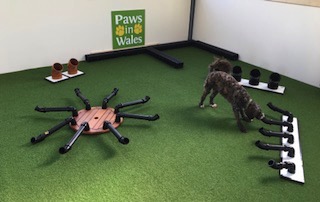Scentwork
It is an activity that can be done anywhere and by any dog. It needs very little equipment.
In a class situation dogs work one at a time, resting quietly in their car or crate between searches.
Anxious or fearful dogs grow in confidence, while excitable or reactive dogs learn to channel their energies into the search, increasing focus and calmness.
The bond between dog and owners strengthens as owners learn to observe their dog’s movements, understand their body language and put their trust their dog’s skill.

Scent Detection
A dog’s sense of smell is around 200 times as acute as our own. They can detect molecules present as parts per trillion but it is only fairly recently that we have begun to use their incredible skill for medical and security detection, and now increasingly as a newly developing range of dog sports.
Scent Detection teaches your dog the same skills of a Customs or Police sniffer dog, but in an accessible and enjoyable setting
We teach the dogs find a particular scent, then to ‘indicate’ with their nose close to the source, pointing to it with their muzzle.
As the dogs’ expertise and confidence grow, the search area becomes increasingly challenging, with more distractions and decoy scents.
Searches take place indoors initially, then we move outdoors, searching vehicles, outbuildings and all areas of the property.
When the dogs are fully proficient we take them to other locations and the ‘finds’ become smaller and more challengingly hidden.
Scent Discrimination.
A dogs’ sense of smell is so sophisticated they can also hold a new scent then discard that scent memory once they have made the find.
Dogs learn to ‘take’ the scent then find an article bearing the same scent,returning itto their owner. This is called an Active Indication.
Decoy scents are progressively introduced and as their proficiency grows we introduce new ‘hot’ scents echoing Competitive Obedience ‘C’ scent.
